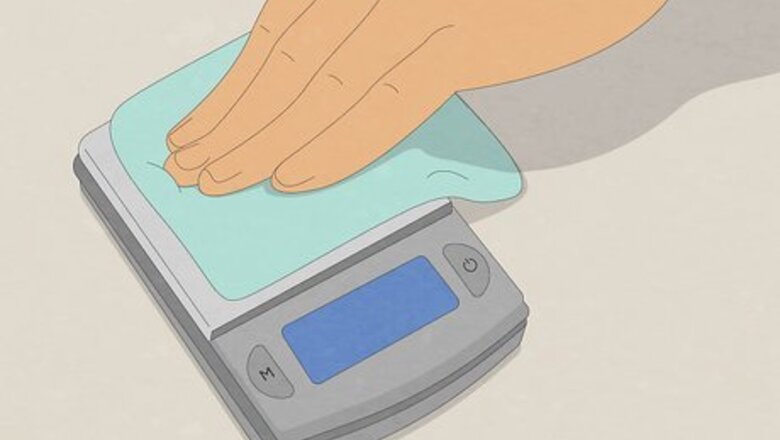
views
- Wipe your scale with a damp, soapy cloth and set it down on a flat, sturdy surface. Then, turn on your scale and let it warm up for 1 minute.
- Consult your scale’s owner’s manual to enter calibration mode. For instance, hold the “MODE” button until the display screen flashes “CAL.”
- Add calibration weights, nickels, or pennies on the scale to match the weight on the screen. Keep them on the scale until the display flashes “PASS.”
Calibrating Your Scale
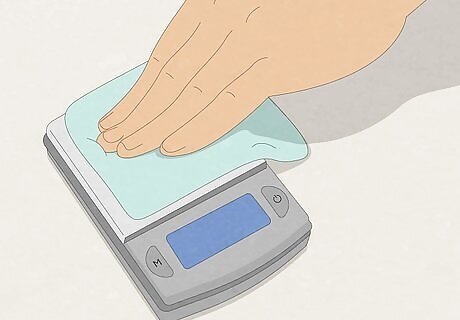
Clean your scale and place it on a flat, sturdy surface. Dampen a microfiber cloth in a mixture of warm water and dish soap. Then, wipe the cloth over your scale to remove any dust, debris, and stuck-on residue that might affect the calibration process. Dry the scale off with a towel and then set it down on a sturdy, level surface, like a table or counter. Just make sure the spot you choose is free from air currents, vibrations, and high humidity as they can affect the calibration process. If you’re unsure whether the surface is level, use a carpenter’s level to check. Or, place a small ball or pencil on the surface to see if it rolls off. To reduce vibrations and shakes, place a mouse pad, grip pad, or pot holder under your scale. Place your scale away from electronic devices too, as they can affect the scale’s calibration and accuracy.
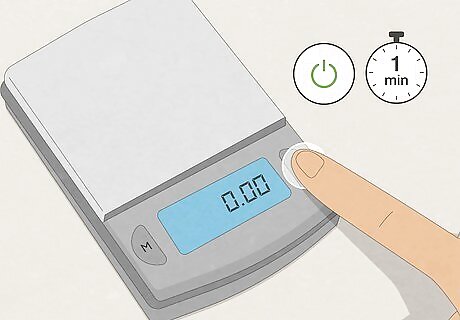
Turn on your scale and let it warm up for 1 minute. Press your scale’s power button to turn it on. The button is typically on the front face of the scale, but depending on your scale it might be a switch on the back or side. Then, give your scale 1 minute to “wake up,” or wait as long as your scale model’s instructions recommend. Consult your device’s user manual for specific instructions. Some models ask you to wait 30 minutes for your scale to warm up while some don’t instruct you to let it warm up at all. After warming up, most scales read “0.00” on their display.
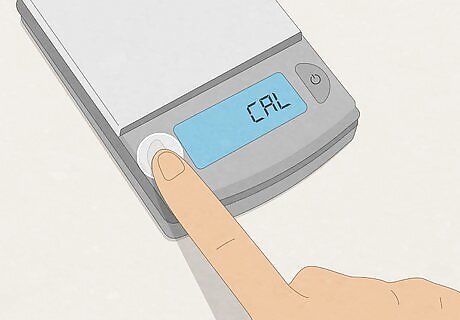
Set your scale to calibration mode. Follow your scale’s instructions for putting it into calibration mode, which are detailed in its user guide. For some models, you press the “MODE” button until the scale’s display reads “CAL.” On other models, you turn the scale back off and then press a series of buttons to enter calibration mode. Some scales even have a calibration button labeled “CAL” that you press. If you can’t find your scale’s user manual, search for your model plus “user’s manual” online. Or, visit the manufacturer’s website.
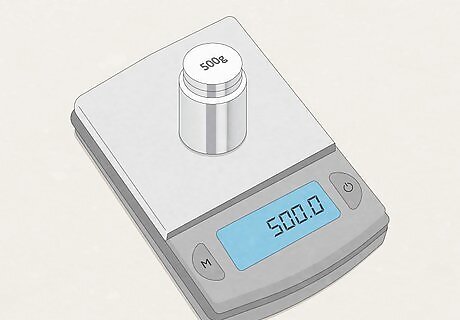
Add weights or coins on the scale to match the weight on the display. During calibration, most scales flash a weight on the screen, like 50.0, 100.0, or 500.0 grams, that you match with your own weights. You simply add calibration weights or U.S. coins on the scale until they add up to the weight on the scale’s display. For example, if the display weight is 50.0 g and you have 5.0 g weights, add 10 weights on the scale. If you don’t have weights, use an item that you know the exact weight of: Pennies made after 1983 weigh 2.5 grams (0.088 oz). Nickels made after 1866 weigh 5 grams (0.18 oz). Dimes made after 1965 weigh 2.27 grams (0.080 oz). Quarters made after 1965 weigh 5.67 grams (0.200 oz). A 500 ml (16.9 oz.) bottle of water weighs 500 g. Or, fill a measuring cup with 500 ml (16.9 oz.) of water. Candy bars that list their net weight on the packaging. Calculate the number of weights you need to reach the calibration weight by dividing the calibration weight by the mass of the weight you’re using. Note: The weights of U.S. coins are not 100% accurate, as damage and debris can alter their mass. For the most accurate calibration, use calibration weights. Do not use weights that are heavier than your scale’s weight capacity, as they can damage the scale’s ability to weigh items accurately.
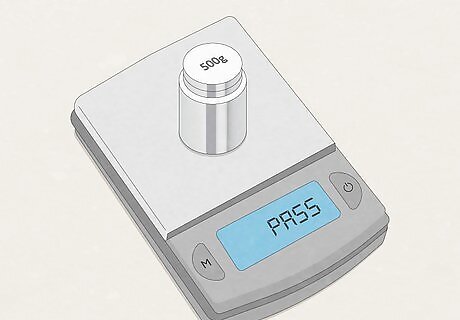
Wait for the scale display to read “PASS,” then remove the weights. Most scales flash “PASS” on the screen if the calibration weight matches the weights you placed on the scale. This can take several seconds, so just wait for the “PASS” message before removing the weights. If the screen reads “FAIL” instead, repeat the calibration steps above. Consult your scale’s user manual to know when calibration is complete. Some scales don’t flash a “PASS” message. Instead, you manually adjust the weight on the scale’s display to match the weights on the scale.
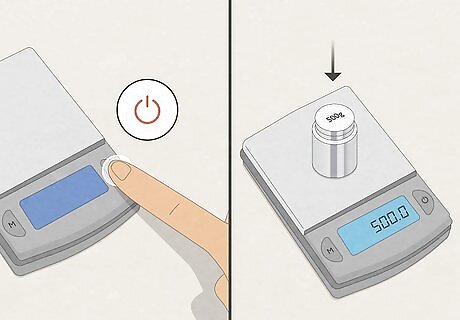
Turn your scale off and on and test if its measurements are accurate. Exit calibration mode and return your scale to normal weighing mode by turning it off. Then, check that your scale is calibrated correctly. Turn it back on and place an item on the scale that you know the exact weight of, like the weight or item you used for calibration. If the scale reads the correct weight, you successfully calibrated it! If your scale does not read the correct weight, repeat the calibration steps until your scale is accurately calibrated. If your scale still isn’t calibrating correctly: Replace the batteries. Low battery power can lead to inaccurate calibration. Move your scale away from electronics and appliances. Static can interfere with the calibration process. Ensure your power is working. If your scale is plugged into an outlet or USB port, plug in a different device to see if the power source is providing power.
Storing and Maintaining Your Scale

Store your scale in a clean, dry area that’s out of reach. When you’re not using your scale, turn it off and put it away in a spot that doesn’t accumulate moisture or experience temperature fluctuations. Choose a flat, stable location that’s out of reach, like in a closet or on a high shelf, to protect the scale from damage and needing to be recalibrated often. Cover your scale with a towel or blanket, or put on the dust cover that came with it, to prevent dirt and debris from accumulating on it in storage. Moisture, dirt, temperature fluctuations, and unsteady surfaces can cause your scale to malfunction or need recalibration.
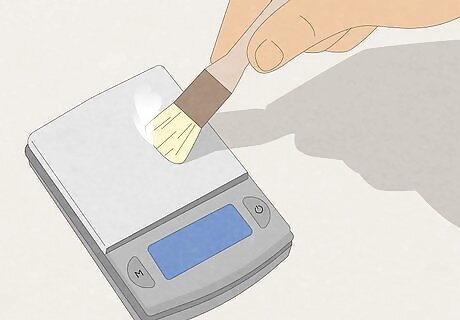
Brush your scale with a small, soft brush before using it. Specks of dust and debris can affect your scale’s accuracy. To remove any dust that’s accumulated on your scale, simply brush it with a soft-bristled brush. Just be gentle with the brush so you don’t press your weight on the scale, as this can damage the scale’s ability to output accurate measurements.
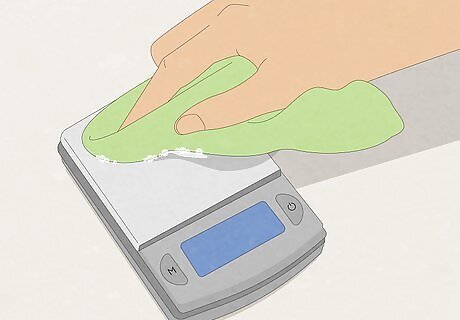
Wipe down your scale with a damp, soapy cloth after each use. Ensure your scale is nice and clean before storing it away by mixing together warm water and a few drops of dish soap. Dampen a soft, microfiber cloth in the water and gently wipe it over the scale’s surface. Then, dry off any moisture by wiping the scale with a clean, dry cloth. Ensure the cloth is damp and not sopping wet, as water can damage your scale. If you use your scale to weigh food for cooking and baking, gently scrape off any stubborn debris with a dull knife.
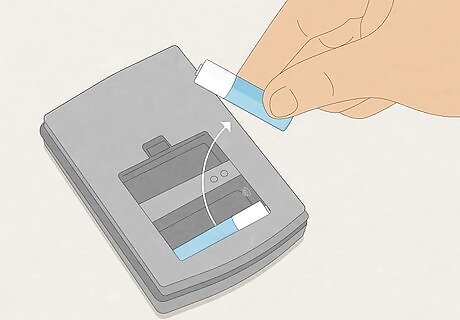
Replace the batteries when they’re low. If you’re using a battery-operated scale and it’s starting to malfunction or output inaccurate measurements, low batteries might be the culprit. Just replace them by opening up the battery compartment, removing the batteries, gently wiping the inside of the compartment, and then adding new batteries. Most scales flash a low battery warning on the screen when the batteries are running out of power. Dispose of the old batteries by taking them to your local recycling center or dropping them off at an electronics retailer that recycles batteries.



















Comments
0 comment